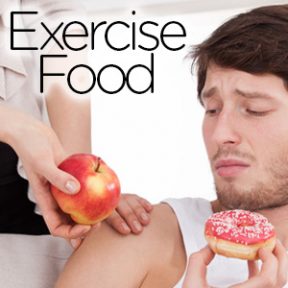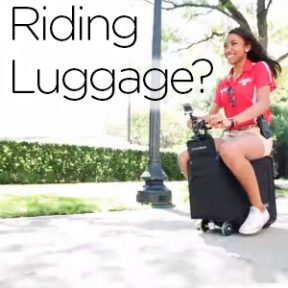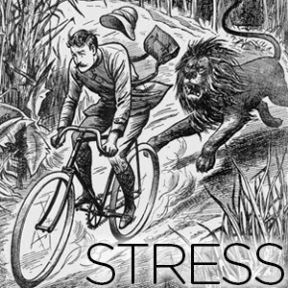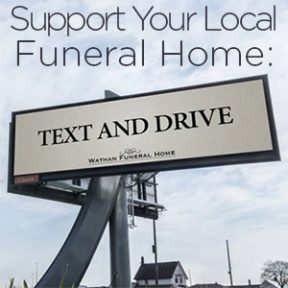 When you think about it, just about every major problem we’re facing today is caused because we have too many people on this planet.
When you think about it, just about every major problem we’re facing today is caused because we have too many people on this planet.
That’s what Pascal found while she searched for viable projects to do. After much research and contemplation, Pascal is proposing that every couple has just 2 (or less) kids. We found it difficult to explain, so she created a cute whiteboard video with great illustrations to show the world why we need to reduce our population of 7 billion people before we hit 10 billion.
Check out her website and whiteboard video at www.PopOverPop.com. Then go to the PROMISE page and pledge to only have 2 (or less) children or share this with friends and family to get the message out.
It’s really not okay to have more than 2 children because of the devastating impact it will have on our quality of life and the environment. Watch Pascal’s whiteboard video to see why you really can’t afford to have more than 2 kids anyway.
She’s done a great job with this movement!
 When you think about it, just about every major problem we’re facing today is caused because we have too many people on this planet.
When you think about it, just about every major problem we’re facing today is caused because we have too many people on this planet.
That’s what Pascal found while she searched for viable projects to do. After much research and contemplation, Pascal is proposing that every couple has just 2 (or less) kids. We found it difficult to explain, so she created a cute whiteboard video with great illustrations to show the world why we need to reduce our population of 7 billion people before we hit 10 billion.
Check out her website and whiteboard video at www.PopOverPop.com. Then go to the PROMISE page and pledge to only have 2 (or less) children or share this with friends and family to get the message out.
It’s really not okay to have more than 2 children because of the devastating impact it will have on our quality of life and the environment. Watch Pascal’s whiteboard video to see why you really can’t afford to have more than 2 kids anyway.
She’s done a great job with this movement!
 Back in 1997 (yup, that was a long time ago), I planned an unforgettable adventure for my family. My husband had recently sold his computer marketing company and I had just started Merit Academy. We certainly didn’t have the funds for a 6-week European vacation but I found a way to pull it off for little more than our normal cost of living. We traded homes and cars with families in our destination countries. With a little organizing ahead of time, we had the time of our lives!
Back in 1997 (yup, that was a long time ago), I planned an unforgettable adventure for my family. My husband had recently sold his computer marketing company and I had just started Merit Academy. We certainly didn’t have the funds for a 6-week European vacation but I found a way to pull it off for little more than our normal cost of living. We traded homes and cars with families in our destination countries. With a little organizing ahead of time, we had the time of our lives!
We went to England and stayed in a flat in Lewis for 2 weeks, which is about an hour south of London. The kids, who were 8 and 12 years old at the time, loved exploring this English home. They loved the feather beds and were intrigued by the tiny steps (different from our standard 7-inch rise and 11-inch run) up their bedroom on the 3rd floor. The boy who lived in the house left them games to play and books to read. We discovered the Horrible Histories series that were filled with history facts that were presented in a hilarious fashion – they were irresistible to read! We grocery shopped at their neighborhood stores and learned how to use their kitchen appliances, which were surprisingly different from ours at home. By having a home base in Lewis, we took many day trips using our exchange family’s car. They used our extra car while they stayed in our house, too! We also travelled up to Stratford to see Hamlet, and then up to Liverpool to check out the Beatles Museum. Then we took a 3-day trip to Ireland to meet our Irish family (the Mahers and D’Arcys). The girls enjoyed staying on the farm and meeting their D’Arcy cousins.
We went from England to France by ferry and traded homes with a young couple who had a studio in the heart of Paris. Living in Paris for 2 weeks gave us the opportunity to buy baguettes and cheese every morning – just like the Parisians. The girls looked forward to going to their favorite bakery to pick up their own baguettes and buy scrumptious desserts like Napoleons! Yum. We also played an art history game that required that we visit 16 art and history (mostly art) museums. They found Modiglianis, Dalis, and all of the Impressionist painters on their lists. Learning how to buy vegetables in the French corner stores was an adventure in itself. Without help from the grocery clerks, the girls had to figure out how to weigh their produce, pay for it, and then bag it up themselves. Ahh, the French! What doesn’t kill you makes you stronger, right? We didn’t trade cars because we took the Metro everywhere. We even took a day trip to Versailles to see Marie Antoinette’s trianon palace.
After Paris, we took a train all the way to Florence, Italy, where we stayed for our last two weeks. We also exchanged cars with our Italian exchange family. This time we stayed in a luxurious apartment suite with an elevator. The house was filled with magnificent artwork and decorations. We learned yet another culture, that was quite different from the English and French. We visited art and history museums but the girls weren’t impressed after spending 2 weeks in Paris. They saw enough Madonna and child paintings that would last a lifetime. We took several 2-day trips to Rome to see the Coliseum, Sistine Chapel, and Saint Peter’s Basilica, then down to Pompeii to see the archaeological site, and then up to Venice to ride gondolas. We accidentally ended up in Siena on one of the 2 days of the year when they held the Palio, a 90-second horse race. Ten horses and riders dress in full regalia marched around to the cheering crowds before the race. Each rider represented their extended family and the entire town comes out for this race. After the race, 90% of the people burst out into tears because they lost the race. It was quite a spectacle for the girls to see!
We used Intervac Home Exchange back in 1997. All three of our home exchanges were wonderful and different. One of our good friends, Jeni Sudbrink, greeted the foreign families at our home here in Santa Cruz when they arrived and gave them a welcome basket filled with tourist information and insider tips on where to eat and what to do.
By doing this 6-week home exchange, we didn’t have to pay for exorbitant hotel costs or dining out for three meals per day. We didn’t have to rent a car or pay for Eurail passes. Even our flights were all free because we used our frequent flier miles. Our only expenses besides normal costs of living (groceries, dining out, gasoline) were entertainment and ferries or trains between our destinations.
I would do this again in a heartbeat! It makes traveling much more comfortable and the experience culturally enriching.

 Okay, I realize I’m not your sports model who works out all the time and stays super slim.
Okay, I realize I’m not your sports model who works out all the time and stays super slim.
Actually, I’m quite the opposite. But when I read this article, I thought I’d share it with you because it’s simple to do and it seems to be working for me.
I have read all kinds of theories about eating or not eating certain kinds of food after exercising, but nothing ever stuck because it was too complicated.
So here is the CliffsNotes ® version for you:
BEFORE EXERCISE:
- Nuts (100 grams of almonds or walnuts)
- Oatmeal with a handful of blueberries
- Whole-grain bread with low-fat cheese
AFTER EXERCISE:
- Whey protein and almond milk
- Scrambled eggs with a glass of orange juice
Check out the source article at Lifehack.org to learn about why this optimizes weight loss.
[Source]
 Now that there’s just a few weeks of summer left, you might be pulling out your hair trying to engage and entertain your young kids.
Now that there’s just a few weeks of summer left, you might be pulling out your hair trying to engage and entertain your young kids.
Here’s something you can do with things in your pantry. Chemistry experiments are always fun because it’s all about change. I love this one because it also teaches kids how to mix primary colors to create a rainbow of colors – or mud when they mix all of the colors together.
Simply pour baking soda into a glass baking dish. Then fill 3 glass jars with white vinegar. Add food coloring to each jar: red, blue, and yellow. Then let your children pour the vinegar on the baking soda. They’ll love watching it bubble up and then change colors as they mix the vinegar.
It’s a great way to get your kids turned on to science! Make sure you click the link in the source below – there’s a great video!
[Source]
 Do you remember those shiny silver metal suitcases? They were heavy and they didn’t have wheels back then. When I was 11 years old, I traveled all over Japan and had to carry my suitcase up and down stairs and down long streets. It really put a damper on traveling.
Do you remember those shiny silver metal suitcases? They were heavy and they didn’t have wheels back then. When I was 11 years old, I traveled all over Japan and had to carry my suitcase up and down stairs and down long streets. It really put a damper on traveling.
Then in 1970, Bernard Sadow invented the wheeled luggage and revolutionized travel. Except for going up and down stairs, we never had to carry our suitcases anymore. Rolling my big heavy suitcases was easy to do and it made going from one end of an international airport to the other a breeze.
And now, the Modobag has created a rideable suitcase. Yup! I guess rolling a suitcase was getting hard to do, so now we can actually sit on our motorized luggage and get to our destination 3 times faster than walking. Because it’s a carry-on size, you can take it on the plane with you so you never have to be without it. And it also has 2 USB ports to charge your phone and laptops, and the motor holds a charge for up to 6 hours. The manufacturer claims that you only lose 15% of packing space because of the motor. Wow.
I wonder if the airports will have to paint lanes in the terminals and install traffic lights. They’ll probably also need to have slow lanes for the non-rideable suitcases. Hmm.
I have to admit I’m curious and want to check out the rideable luggage!
[Source]
 Kids with LD need to beware of SAT/ACT accommodations and scores when taking them for annual school requirements; they may end up in their college applications!
Kids with LD need to beware of SAT/ACT accommodations and scores when taking them for annual school requirements; they may end up in their college applications!
We all know that students with learning disabilities (or differences) receive special accommodations on tests in schools to give them the opportunity to demonstrate their knowledge of the material when their disabilities interfere. These accommodations can take the form of Braille, reader or signer, calculator, note taker, and text-to-speech conversions. But the most common accommodation is extended time on tests and assignments.
The school usually provides the tests that document the students’ learning disabilities and makes recommendations for specific accommodations for each student. Until now, this has been a standard practice that worked reasonably well because the school was also responsible for implementing the students’ educational plan.
But schools in 23 states have recently started requiring that high school students take either the SAT or ACT – the same tests that students take for college admissions — instead of the old standardized tests (STAR). Their reasoning for this big change is that it helps prepare students to start thinking about college and gives them a heads up about their scores.
So what’s the problem here? Students with learning disabilities are accustomed to taking these standardized tests with their accommodations but many students have found that the College Board and ACT Inc are not granting the same accommodations on the SAT and ACT respectively. To further aggravate this situation, the College Board and ACT Inc provide college-reportable scores to the colleges and records of these scores will be available for colleges to see when the student applies to college during their 12th grade year. This puts the students in a precarious situation because they may have to take the SAT or ACT without accommodations so their scores will be lower or they will report “non-reportable scores” because they took the test with accommodations that either the College Board or ACT Inc did not approve.
Now the Americans with Disabilities Act (ADA) created the “technical assistance” document last September to ensure access to a fair testing environment. Law suits may ensue as the College Board and ACT Inc may be violating a key tenet in ADA regulations because they may be requiring unnecessary documentation and testing, which leads to accommodation denials that don’t allow the students’ scores to reflect their knowledge and skills.
According to the College Board, they argue that they approve 85% of their accommodation requests; ACT states they approve 92%. Most denials are a result of failing to identify a learning disability, lacking evidence that accommodations are needed, or missing parents’ signatures.
If your child’s accommodations are denied for the SAT or ACT, get a second opinion by using private testing companies. Talk to your IEP team and then the ADA department to lodge complaints. It’s important to be aware of what tests your child will be taking, whether or not accommodations are allowed, and who will see the results.
You don’t want a 10th grade standardized score to end up on your child’s college applications! You are your child’s best advocate!
[Source]
 Did you know that your brain can process 720 possibilities all at once? EXCEPT when stressed…
Did you know that your brain can process 720 possibilities all at once? EXCEPT when stressed…
We all know that stress is bad. But did you know that when you’re not stressed, your brain can process 720 possibilities all at once? That’s like a super, high-functioning computer! That puts you in the position to be effective, efficient, creative, and brilliant all at the same time. You probably remember a great brainstorming session when you came up with solutions to problems or innovative ideas.
But did you know that when you’re stressed, your rational brain becomes an emotional brain that releases stress hormones (cortisol, adrenaline and norepinephrine). It does that to simplify the situation so you can focus on your safety, because your brain perceives stress as a signal about your wellbeing. So stress flushes out all of those wonderful creative possibilities (remember, the 720 possibilities) so it can protect you. So your 720 shrinks down to only 120; and then the tail spin here leads to down to just 24. Stress can cause you to lose 96% of your brain’s positive processing power.
The good news is that you can get your 720 possibilities back by doing 3 simple steps. Try them, it works for me!
Step 1: Be grateful
Whatever the situation is, look for the bright side. Those who wallow in pity just keep increasing their stress. Once you embrace something positive, if flushes out the stress hormones. You’ll find that positive thoughts and solutions keep adding more dopamine in your brain so you can make good decisions.
Step 2: Be forthcoming
When you realize that there is a problem, tell others about your emotional state. By recognizing that you are stressed and sharing with others, it helps you actually reduce the stress. That big ugly monster in the room starts to not look so big or ugly anymore. Don’t bottle your stress!
Step 3: Fill your lungs
When you hear bad news, your knee-jerk response is to hold your breath, and then breathe fast, shallow breaths. This signals your limbic system that there is an eminent threat so it focuses all of your brain power on saving your life. That’s good if a lion is chasing you and you need your adrenaline to make you run faster than you’ve ever run before, but if you’re NOT being chased by a lion, try just filling your lungs with slow and deep breathing from your diaphragm. This will tell your limbic system that the threat is gone and your brain can once again go back to high-functioning thinking.
So stop sweating the small stuff and be positive. That happy place will actually beget more happy thoughts and productive behaviors.
[Source]
 You know those annoying stickers on fruit and veggies – the ones that don’t come off and you find it in your meals? Well they actually have valuable information that you probably want to know.
You know those annoying stickers on fruit and veggies – the ones that don’t come off and you find it in your meals? Well they actually have valuable information that you probably want to know.
There are over 1400 codes, but most serve the retailers, not you. So, I’ve made a simple list of codes that you should know. Oh, and by the way, the stickers are made out of edible paper, so don’t worry when your kids accidentally eat them.
Produce Codes that matter:
4-digit codes = Conventionally grown (pesticides and fertilizers)
Starts with 3 or 4 (3000-4000)
5-digit codes = Organically grown (no pesticides or fertilizers)
Starts with 9 (90000)
So if you’re not sure if the produce you’re ready to buy is organic or conventional, just read the label!
If you’ve been following the GMO (genetically modified organisms) battles, Monsanto (the world’s largest GMO producer) is fighting to keep their GMO secrets from ending up on our food labels.
I believe that we deserve to know what’s in the food we’re eating. Just saying…
[Source]
 Building a tiny house this summer has been anything but tiny. It’s really building all of the aspects of a conventional house, but on a really small scale. Will completed the subfloor last week, and he is framing the first floor (there’s a loft with a dormer that makes up the second floor) this week. He wakes up each morning raring to go and has recruited his friends to help during the week and his parents on the weekend. Being a perfectionist with an engineer’s brain, Will is crafting probably one of the most perfect (square) framings I’ve ever seen.
Building a tiny house this summer has been anything but tiny. It’s really building all of the aspects of a conventional house, but on a really small scale. Will completed the subfloor last week, and he is framing the first floor (there’s a loft with a dormer that makes up the second floor) this week. He wakes up each morning raring to go and has recruited his friends to help during the week and his parents on the weekend. Being a perfectionist with an engineer’s brain, Will is crafting probably one of the most perfect (square) framings I’ve ever seen.
Will measures, then measures again to make all of his cuts exactly correct. He’s learned that wood isn’t straight (not even close!) and even with his father’s weight pulling down on the wood it doesn’t budge. But that’s when Will pulled out the pipe clamp and used it to move the wood so he could perfectly align his top plates. Will’s lucky that his friends are fascinated by the project and they’re looking for community service hours, and that his parents are supportive even though they know nothing about construction, building, or tools (his dad is an oral surgeon and his mother is a nurse).
During this past week, Will learned how to use a chop saw, circular saw, nail gun, and the good ol’ hammer. He insists on removing any nails that bend and keeping a clean workplace. Cliff Bixler, Will’s mentor, has given him many pearls of wisdom and helps Will think through each step. Will is in awe of how Cliff can take a circular saw with one hand while holding a huge sheet of plywood with the other to make a perfect cut. The plans assume that the builder knows how to use power tools, understands building lingo, and comprehends how to build. Remember Will is just 17 years old and has never built anything before this. Cliff is an expert builder and a good teacher.
For you wanna-be-tiny-house builders, Will is creating an instructional video for non-builders. He’s giving his pearls of wisdom from the perspective of someone who’s never used a hammer before. By describing how the sound of the air compressor shocked him when he first turned it on to how exciting it was to use the nail gun, he’ll give the novice tips to get them started and through the entire process of building a tiny house. I’ll keep you posted!

 Kids find it impossible to not look at a text message or answer calls while they’re driving. It’s like an addiction. THEY SIMPLY CAN’T IGNORE THEM.
Kids find it impossible to not look at a text message or answer calls while they’re driving. It’s like an addiction. THEY SIMPLY CAN’T IGNORE THEM.
But while they’re under your control and guidance, require that they either turn off their phones or place them in the backseat or trunk while they’re driving.
If they want to check their phones, they’ll have to pull over to do so. Sounds mean or controlling? Maybe. But it will probably save their lives.










